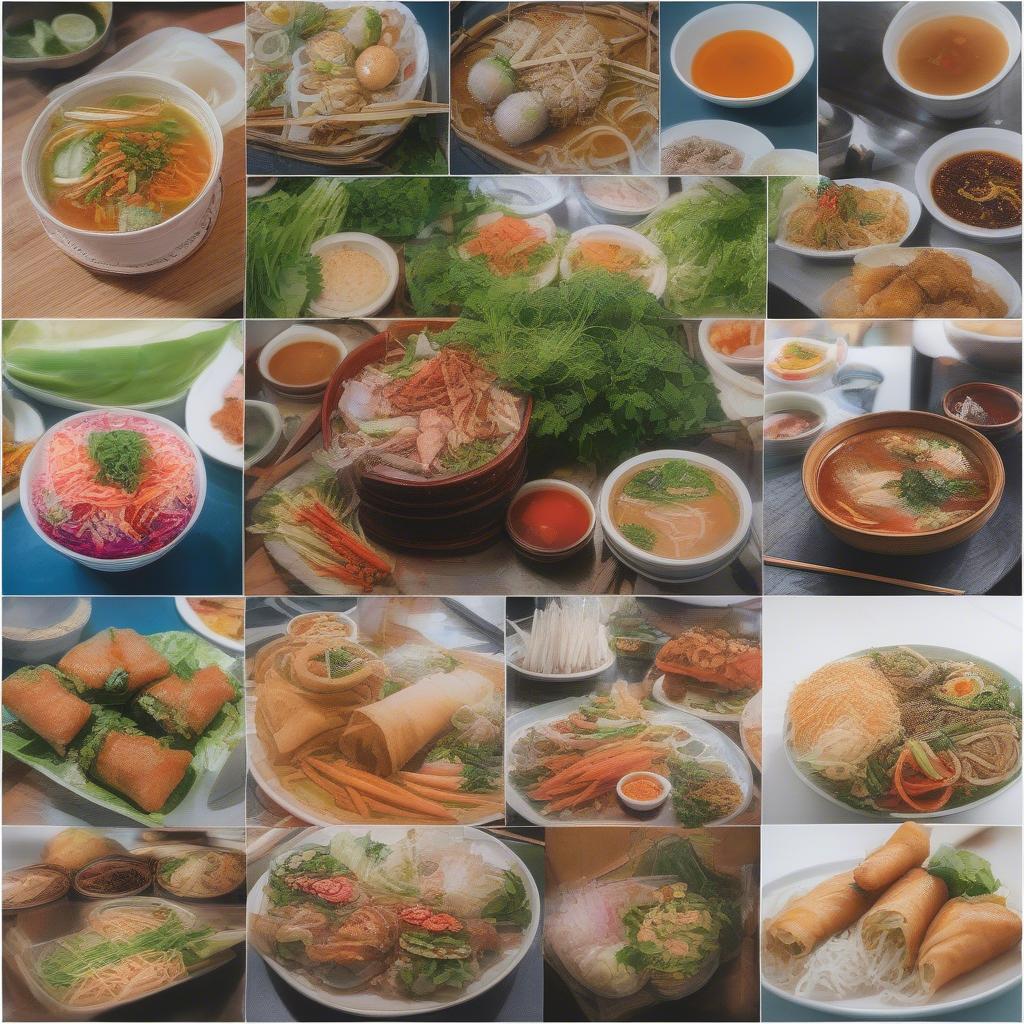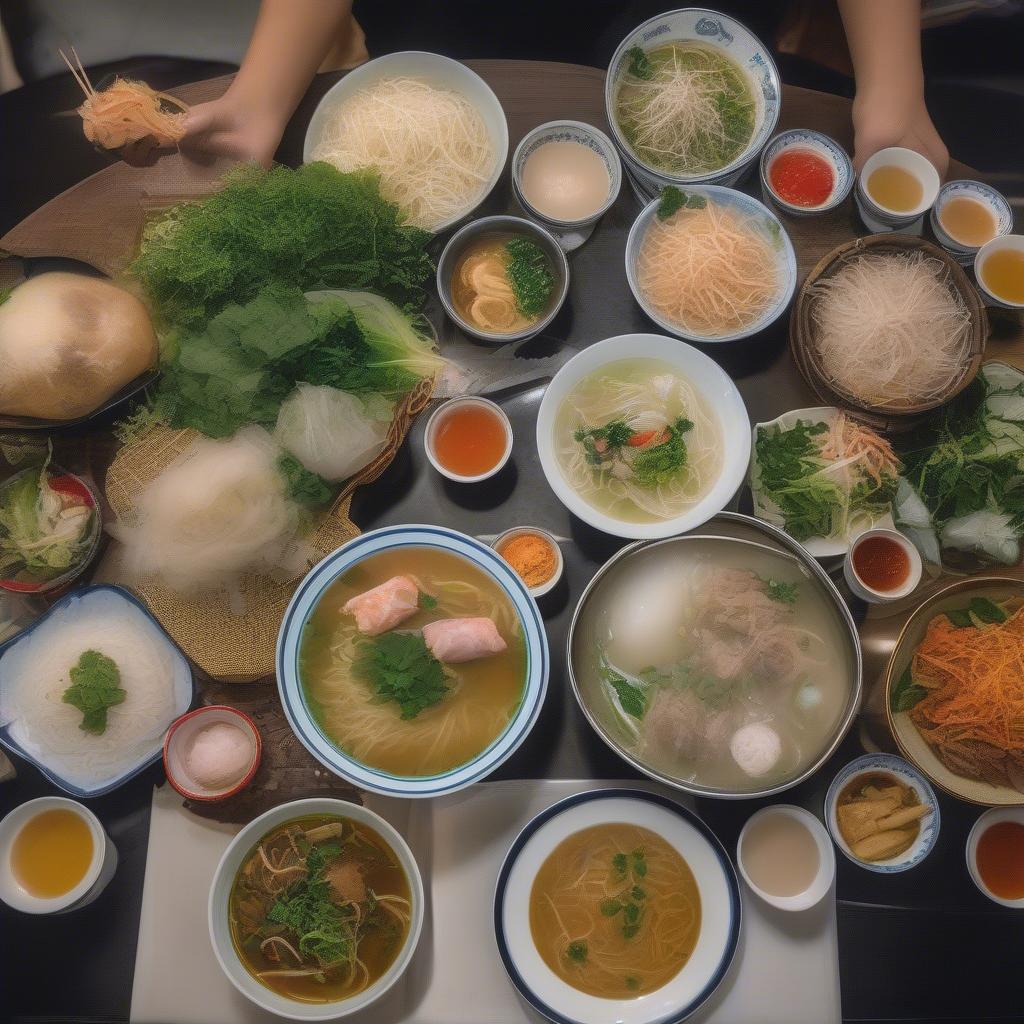
Vietnamese street food is a vibrant tapestry of flavors, aromas, and cultural traditions. From bustling city streets to quaint countryside villages, the sights and sounds of street food vendors create an unforgettable sensory experience. This culinary adventure offers an authentic taste of Vietnam, a journey that tantalizes the taste buds and leaves a lasting impression on every traveler.
Table Content:
- A Symphony of Flavors: Exploring the Diversity of Vietnamese Street Food
- The Art of Street Food: Ingredients and Culinary Techniques
- A Cultural Immersion: The Significance of Street Food in Vietnam
- Navigating the Street Food Scene: Tips for an Authentic Experience
- Beyond the Usual: Vegetarian and Vegan Delights
- Conclusion
- FAQ
A Symphony of Flavors: Exploring the Diversity of Vietnamese Street Food
Vietnamese street food is far more than just a quick meal; it’s a reflection of the country’s rich culinary heritage. Each region boasts its own unique specialties, shaped by local ingredients, cultural influences, and time-honored recipes. The north is known for its delicate flavors, featuring dishes like pho, bun cha, and banh cuon. Moving south, the cuisine becomes bolder, incorporating more spices and herbs, as seen in dishes like banh mi, com tam, and goi cuon.
The diversity of Vietnamese street food extends beyond regional variations. From savory to sweet, from light bites to hearty meals, there’s something for everyone. Whether you’re craving a steaming bowl of noodle soup, a crispy crepe filled with fresh vegetables, or a refreshing iced coffee, Vietnamese street food offers a kaleidoscope of culinary delights.
 A variety of Vietnamese street food dishes
A variety of Vietnamese street food dishes
The Art of Street Food: Ingredients and Culinary Techniques
Freshness is paramount in Vietnamese street food. Vendors often source their ingredients from local markets, ensuring the highest quality and flavor. Herbs, spices, and vegetables play a crucial role, adding depth and complexity to each dish. The delicate balance of sweet, sour, salty, spicy, and umami flavors is a hallmark of Vietnamese cuisine, creating a symphony of tastes that dance on the palate.
Traditional cooking techniques are also integral to the art of Vietnamese street food. From the slow simmering of broths to the skillful grilling of meats, each step is carefully executed to bring out the best in the ingredients. The use of woks, charcoal grills, and steaming baskets adds to the authentic street food experience.
A Cultural Immersion: The Significance of Street Food in Vietnam
Vietnamese street food is deeply ingrained in the country’s culture. It’s not just about eating; it’s about community, connection, and celebrating the simple joys of life. Street food stalls are often gathering places where locals meet, chat, and share a meal. The vibrant atmosphere, the friendly vendors, and the shared experience of enjoying delicious food create a sense of belonging and camaraderie.
 Vietnamese people enjoying street food together
Vietnamese people enjoying street food together
Navigating the Street Food Scene: Tips for an Authentic Experience
Embarking on a Vietnamese street food adventure can be overwhelming, but with a few tips, you can navigate the scene like a pro. Don’t be afraid to try new things. Ask locals for recommendations. Observe how others are ordering and eating. And most importantly, be open to the unexpected. The best street food experiences often happen when you step outside your comfort zone and embrace the local culture.
Be mindful of food safety and hygiene. Choose stalls that look clean and busy. Ensure that the food is cooked fresh in front of you. And drink bottled water to avoid any potential stomach issues.
Beyond the Usual: Vegetarian and Vegan Delights
While Vietnamese cuisine often incorporates meat and seafood, there are plenty of delicious vegetarian and vegan options available on the street food scene. Dishes like pho chay, bun chay, and goi cuon chay are made with tofu, mushrooms, and a variety of fresh vegetables. These flavorful and satisfying meals cater to diverse dietary needs, ensuring that everyone can partake in the culinary delights of Vietnamese street food.
“Vietnamese street food is an explosion of flavors and a true reflection of the country’s vibrant culture,” says renowned food anthropologist Dr. Anh Nguyen. “It’s a must-try experience for any traveler seeking an authentic taste of Vietnam.”
Conclusion
Vietnamese street food is a culinary journey that awakens the senses and nourishes the soul. From the bustling streets of Hanoi to the vibrant markets of Ho Chi Minh City, the aromas, flavors, and cultural experiences associated with Vietnamese street food create lasting memories. Embrace the adventure, explore the diverse offerings, and savor the authentic tastes of Vietnam.
“The beauty of Vietnamese street food lies in its simplicity and freshness,” adds Chef Linh Tran, a celebrated Vietnamese chef. “It’s about using quality ingredients and time-honored techniques to create dishes that are both delicious and nourishing.”
“Don’t be afraid to explore beyond the well-known dishes,” advises travel blogger Mai Pham. “Some of the best street food experiences are found in the hidden gems, the local favorites that aren’t always on the tourist radar.”
FAQ
- What are some must-try Vietnamese street food dishes?
- Where can I find the best street food in Vietnam?
- What are the typical prices for street food in Vietnam?
- Are there vegetarian/vegan options available?
- What are some tips for staying safe while eating street food?
- What are some common Vietnamese street food etiquette tips?
- How can I order street food if I don’t speak Vietnamese?
